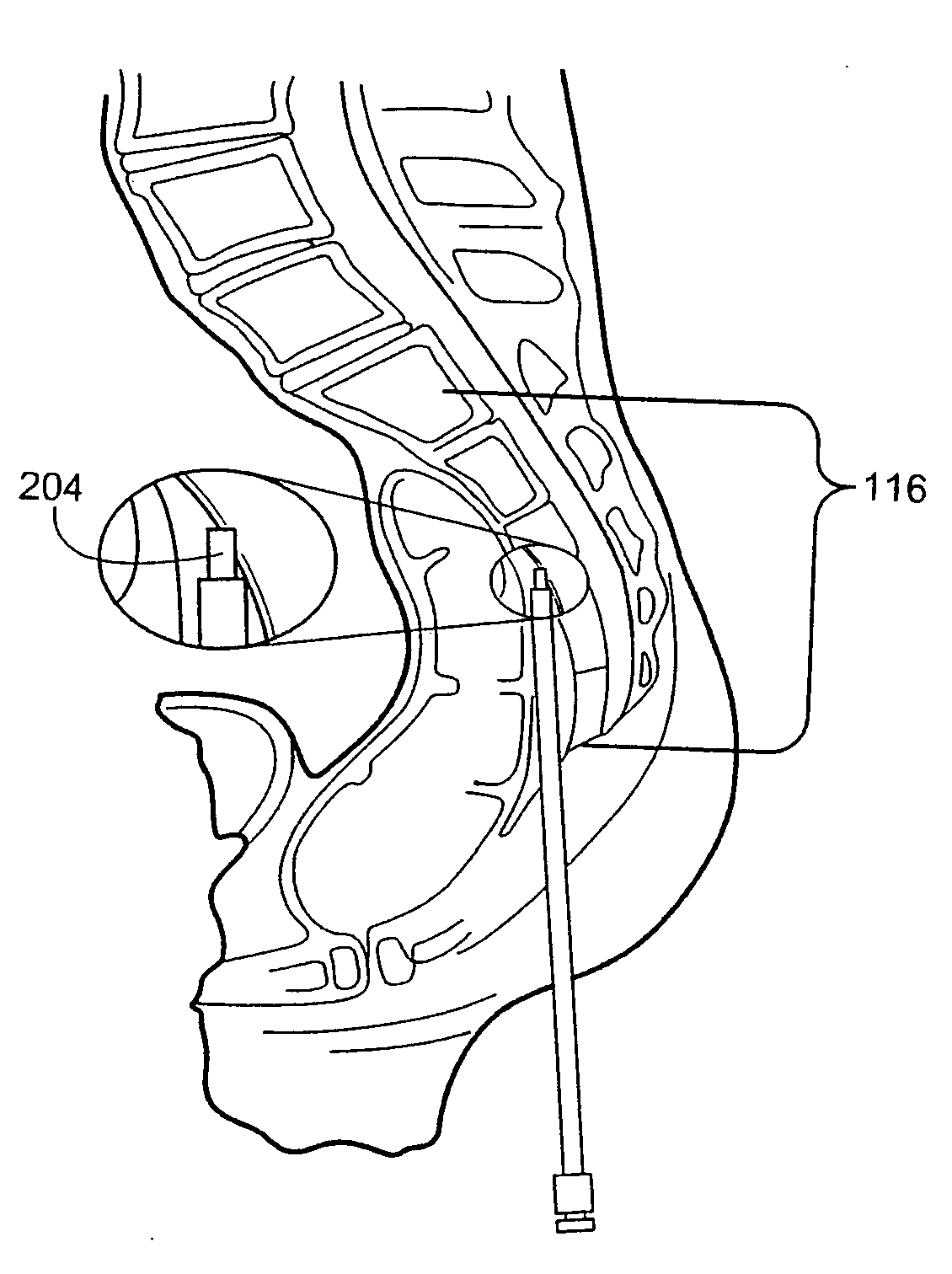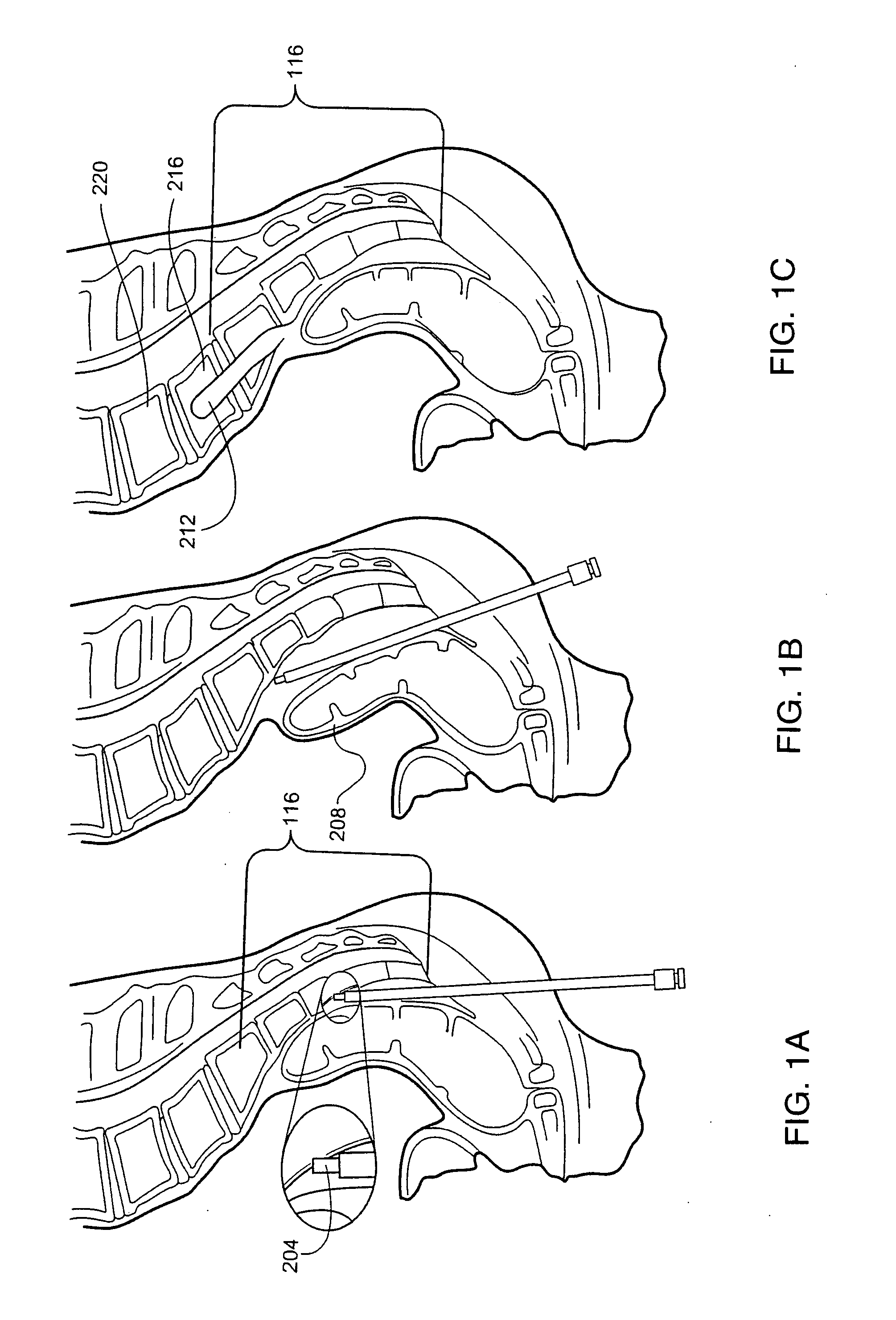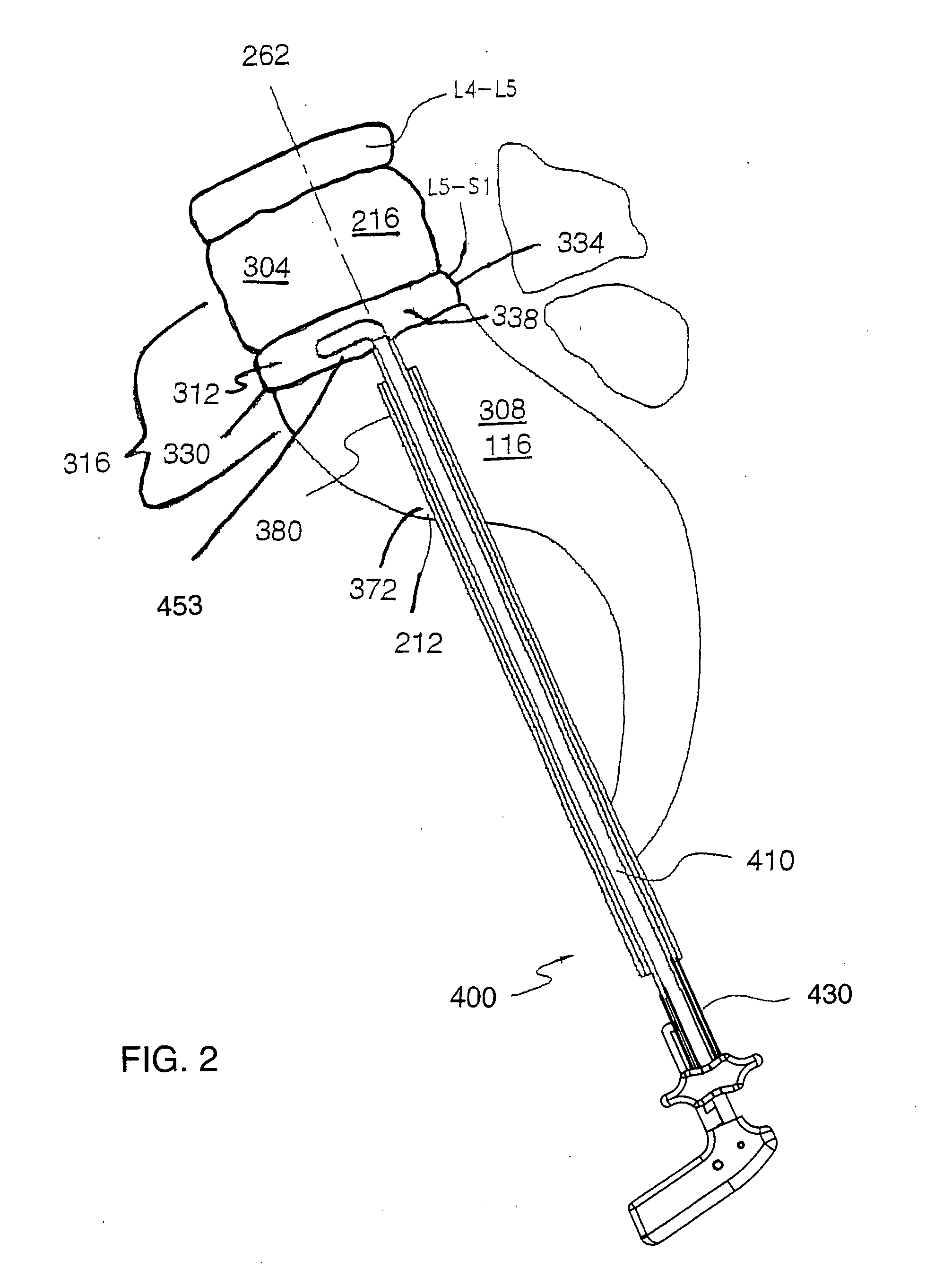Surgical cutter with exchangeable cutter blades
a cutter blade and cutter blade technology, applied in the field of surgical cutters, can solve the problems of reduced gap between adjacent vertebrae, inability to operate as intended, and inability to replace the blade, so as to prolong the useful life of the remainder
- Summary
- Abstract
- Description
- Claims
- Application Information
AI Technical Summary
Benefits of technology
Problems solved by technology
Method used
Image
Examples
Embodiment Construction
[0052] While the inventive cutters described below may be used in other surgical procedures, it is useful in context to describe how these cutters could be adapted for use in a trans-sacral approach. As noted above there are many advantages associated with a minimally invasive, low trauma trans-sacral axial approach. The trans-sacral axial approach (described and disclosed in commonly assigned U.S. Pat. Nos. 6,558,386; 6,558,390; 6,575,979; 6,921,403; 7,014,633, and 7,087,058) has a number of advantages over other routes for delivery of therapeutic devices to motion segments but there are logistical challenges to the preparation of an intervertebral disc space via an axial access channel. The process of addressing these challenges impacts certain aspects of the cutters intended for use in this manner.
[0053] Trans-Sacral Axial Access.
[0054] The trans-sacral axial access method illustrated in FIGS. 1A-1C, eliminates the need for muscular dissection and other invasive steps associate...
PUM
 Login to View More
Login to View More Abstract
Description
Claims
Application Information
 Login to View More
Login to View More - R&D
- Intellectual Property
- Life Sciences
- Materials
- Tech Scout
- Unparalleled Data Quality
- Higher Quality Content
- 60% Fewer Hallucinations
Browse by: Latest US Patents, China's latest patents, Technical Efficacy Thesaurus, Application Domain, Technology Topic, Popular Technical Reports.
© 2025 PatSnap. All rights reserved.Legal|Privacy policy|Modern Slavery Act Transparency Statement|Sitemap|About US| Contact US: help@patsnap.com



